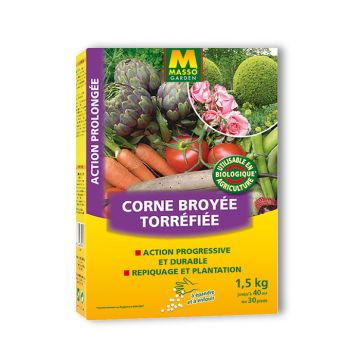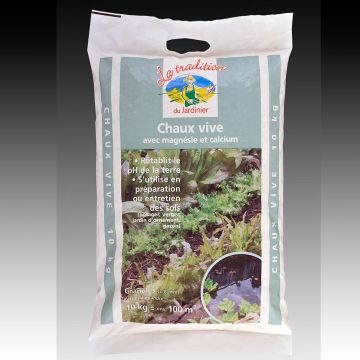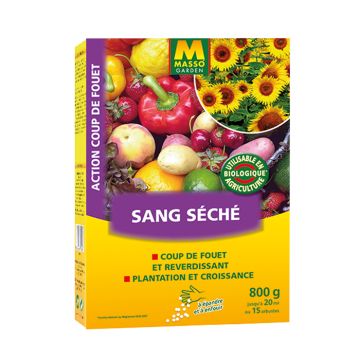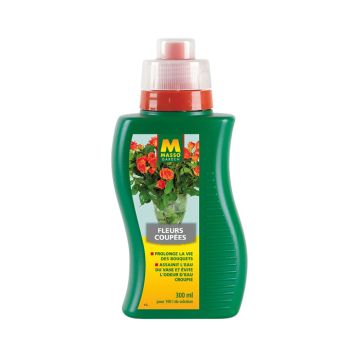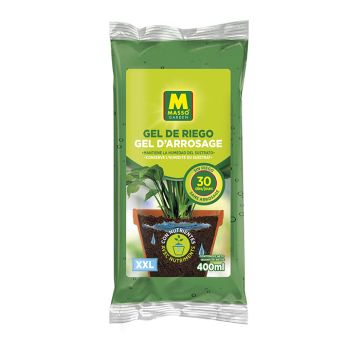

Masso Garden Sphagnum Moss in 5-litre bag
Masso Garden Sphagnum Moss in 5-litre bag
Is sphagnum still alive and can it be regenerated?
Stan, 22/05/2020
Special offer!
Receive a €20 voucher for any order over €90 (excluding delivery costs, credit notes, and plastic-free options)!
1- Add your favorite plants to your cart.
2- Once you have reached €90, confirm your order (you can even choose the delivery date!).
3- As soon as your order is shipped, you will receive an email containing your voucher code, valid for 3 months (90 days).
Your voucher is unique and can only be used once, for any order with a minimum value of €20, excluding delivery costs.
Can be combined with other current offers, non-divisible and non-refundable.
Home or relay delivery (depending on size and destination)
Schedule delivery date,
and select date in basket
We guarantee the quality of our plants for a full growing cycle, and will replace at our expense any plant that fails to recover under normal climatic and planting conditions.

The Masso Garden sphagnum of class 1 is a 100% natural and plant-based fibrous substrate. It is a kind of moss devoid of nutrients, with an acidic pH but a good water retention capacity. This plant 'sponge' is used to cultivate carnivorous and epiphytic plants that grow without soil, such as orchids, bromeliads, or elk horns. It is also a preferred substrate for creating green walls and frames.
The approximately 3000 species of sphagnum belong to the genus Sphagnum, related to mosses (bryophytes) commonly found in our gardens' wet and shaded areas. This plant, which has evolved very little over millennia and can adapt to difficult living conditions, is widespread in peat bogs, which constitute the living and renewable part. The submerged and oxygen-deprived sphagnum decomposes slowly, gradually transforming into blond peat, brown peat, coal, and petroleum over hundreds or even millions of years.
Sphagnum can absorb about twenty times its weight in water, gradually releasing it to the plant roots. It is made up of long fibres measuring up to 9-10 cm. It can be re-moistened as its dry fibres do not break. This plant has antibacterial properties and stimulates root formation, allowing for good plant recovery and attachment. Used alone as a growing medium, it is a naturally aerated material that prevents the rotting of roots sensitive to excess moisture and lack of oxygen. With an acidic pH (5.2), sphagnum is particularly suitable for plants sensitive to limestone in the soil.
All these characteristics naturally make it suitable for cultivating so-called epiphytic plants that thrive away from the harmful ground to their root system but still require a certain degree of humidity. The fibrous structure of this plant sponge will retain fertiliser and the little decomposing organic matter trapped in it, creating a very favourable environment for their development. It is used pure for epiphytic orchids (Phalaenopsis, Miltonia, Vanda, Cattleya), bromeliads (Guzmanias, Vriesea, Aechmeas), or certain Tillandsia like the famous Tillandsia usneoides, the Spanish moss. It is also mixed with blond peat and coconut fibre to cultivate carnivorous plants, which, unlike epiphytes, like to have their feet in water (Drosera, Nepenthes, Dionaea).
In the context of a green wall, sphagnum will be attached to a trellis, allowing plants to anchor their roots. A closed-circuit watering system maintains the vertical surface moist and provides a low-dose fertiliser to nourish the plants.
Tips: It is essential to rehydrate the dried sphagnum by soaking it overnight. Twenty litres of water are needed to rehydrate 1 kg of dried sphagnum. The sphagnum swells quickly, but a soaking time of 12 hours will allow optimal fibre rehydration.
Uses and advantages
Technical features
Tips
Other Soil Amendments
View all →-
, onOrder confirmed
Reply from on Promesse de fleurs
Haven't found what you were looking for?
Hardiness is the lowest winter temperature a plant can endure without suffering serious damage or even dying. However, hardiness is affected by location (a sheltered area, such as a patio), protection (winter cover) and soil type (hardiness is improved by well-drained soil).

Photo Sharing Terms & Conditions
In order to encourage gardeners to interact and share their experiences, Promesse de fleurs offers various media enabling content to be uploaded onto its Site - in particular via the ‘Photo sharing’ module.
The User agrees to refrain from:
- Posting any content that is illegal, prejudicial, insulting, racist, inciteful to hatred, revisionist, contrary to public decency, that infringes on privacy or on the privacy rights of third parties, in particular the publicity rights of persons and goods, intellectual property rights, or the right to privacy.
- Submitting content on behalf of a third party;
- Impersonate the identity of a third party and/or publish any personal information about a third party;
In general, the User undertakes to refrain from any unethical behaviour.
All Content (in particular text, comments, files, images, photos, videos, creative works, etc.), which may be subject to property or intellectual property rights, image or other private rights, shall remain the property of the User, subject to the limited rights granted by the terms of the licence granted by Promesse de fleurs as stated below. Users are at liberty to publish or not to publish such Content on the Site, notably via the ‘Photo Sharing’ facility, and accept that this Content shall be made public and freely accessible, notably on the Internet.
Users further acknowledge, undertake to have ,and guarantee that they hold all necessary rights and permissions to publish such material on the Site, in particular with regard to the legislation in force pertaining to any privacy, property, intellectual property, image, or contractual rights, or rights of any other nature. By publishing such Content on the Site, Users acknowledge accepting full liability as publishers of the Content within the meaning of the law, and grant Promesse de fleurs, free of charge, an inclusive, worldwide licence for the said Content for the entire duration of its publication, including all reproduction, representation, up/downloading, displaying, performing, transmission, and storage rights.
Users also grant permission for their name to be linked to the Content and accept that this link may not always be made available.
By engaging in posting material, Users consent to their Content becoming automatically accessible on the Internet, in particular on other sites and/or blogs and/or web pages of the Promesse de fleurs site, including in particular social pages and the Promesse de fleurs catalogue.
Users may secure the removal of entrusted content free of charge by issuing a simple request via our contact form.
The flowering period indicated on our website applies to countries and regions located in USDA zone 8 (France, the United Kingdom, Ireland, the Netherlands, etc.)
It will vary according to where you live:
- In zones 9 to 10 (Italy, Spain, Greece, etc.), flowering will occur about 2 to 4 weeks earlier.
- In zones 6 to 7 (Germany, Poland, Slovenia, and lower mountainous regions), flowering will be delayed by 2 to 3 weeks.
- In zone 5 (Central Europe, Scandinavia), blooming will be delayed by 3 to 5 weeks.
In temperate climates, pruning of spring-flowering shrubs (forsythia, spireas, etc.) should be done just after flowering.
Pruning of summer-flowering shrubs (Indian Lilac, Perovskia, etc.) can be done in winter or spring.
In cold regions as well as with frost-sensitive plants, avoid pruning too early when severe frosts may still occur.
The planting period indicated on our website applies to countries and regions located in USDA zone 8 (France, United Kingdom, Ireland, Netherlands).
It will vary according to where you live:
- In Mediterranean zones (Marseille, Madrid, Milan, etc.), autumn and winter are the best planting periods.
- In continental zones (Strasbourg, Munich, Vienna, etc.), delay planting by 2 to 3 weeks in spring and bring it forward by 2 to 4 weeks in autumn.
- In mountainous regions (the Alps, Pyrenees, Carpathians, etc.), it is best to plant in late spring (May-June) or late summer (August-September).
The harvesting period indicated on our website applies to countries and regions in USDA zone 8 (France, England, Ireland, the Netherlands).
In colder areas (Scandinavia, Poland, Austria...) fruit and vegetable harvests are likely to be delayed by 3-4 weeks.
In warmer areas (Italy, Spain, Greece, etc.), harvesting will probably take place earlier, depending on weather conditions.
The sowing periods indicated on our website apply to countries and regions within USDA Zone 8 (France, UK, Ireland, Netherlands).
In colder areas (Scandinavia, Poland, Austria...), delay any outdoor sowing by 3-4 weeks, or sow under glass.
In warmer climes (Italy, Spain, Greece, etc.), bring outdoor sowing forward by a few weeks.






























